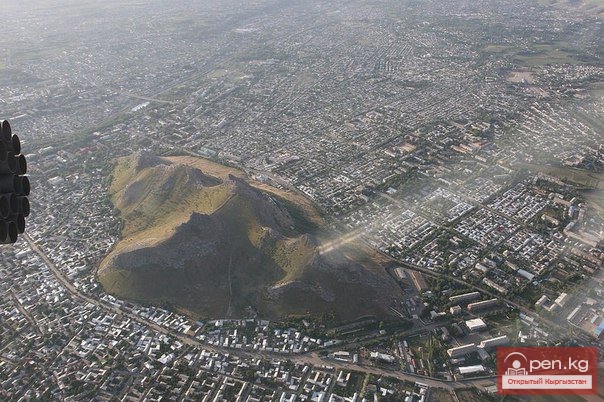
The Chuy Region was established on December 14, 1990. Until 1939, various...

The Naryn Region is located in the southeast of Kyrgyzstan and was first established on November...
Weather forecast for Kyrgyzstan on October 22. According to information from Kyrgyzhydromet, no...

The Osh Region was established on November 21, 1939, replacing the former district. After numerous...

The Batken Region was established on October 12, 1999, from the Osh Region. It includes the...

The Kyrgyz Republic is a mountainous country (average altitude 2750 m above sea level), located in...

Administrative-territorial division of the Kyrgyz SSR as of January 1, 1972....

On April 3 of this year, a meeting took place in Yekaterinburg (RF) between the Deputy Director of...
Weather conditions in Kyrgyzstan on October 24. According to data from Kyrgyzhydromet, clear...

State Natural National Park "Kyrchin" The State Natural National Park...

Century-old Dungan Mosque Made of Pine and Fir The surroundings of Issyk-Kul are not only resort...

Batken is a city in Kyrgyzstan, the administrative center of Batken Region and District. The...

The Talas Region is located in the northwestern part of the Kyrgyz Republic. It was established on...

Jamanatau A mountain range in the Tian Shan, located in Kyrgyzstan, northwest of Lake Chatyr-Kul....

Traveling along the eastern part of the Issyk-Kul Lake coast, you will definitely find yourself in...

Territory, Geography, and Administrative Division of the Kyrgyz Republic The Kyrgyz Republic...

BAZARKORGON AND BAZARKORGON DISTRICT Bazarkorgon (Kyrgyz: Базар-Коргон) is a village in the...

Village Pokrovka is the administrative center of the Manas District in the Talas Region of...

In 1888, the great Russian traveler and explorer of Central Asia, Nikolai Mikhailovich...

The length of the valley is 155 km. It is bordered on the north by the Kyrgyz Ala-Too, on the...

Over the years of independence, the processes of social development in the country have...

Peak Karakol (5281 m) Located in the Oguz Bashi massif on the southern shore of Lake Issyk-Kul;...

Kara-Balta, which translates as "Black Axe," is one of the youngest cities in the Kyrgyz...

The Jalal-Abad Region was established on November 21, 1939. From January 27, 1959, it became part...
The weather in Kyrgyzstan on October 23. According to the data from Kyrgyzhydromet, rain is...

THE CITY OF PISHPEK In 1866, the first Russian settlers began to arrive at the ruins of the Kokand...
Weather forecast for Kyrgyzstan on October 21. According to Kyrgyzhydromet, no precipitation is...

Kyzylsu - Red Water The Kyzylsu Glacier (often referred to as the Eastern Kyzylsu) is a complex...

Birthday of Karakol (Przhevalsk) - July 1, 1869 History has preserved for us the exact date,...

Categories of Protected Natural Areas in Kyrgyzstan Kyrgyzstan has established 83 special...

The Suusamyr Zone includes the eponymous high-altitude valley stretching 155 km. To the north, it...

The Kyrgyz Republic is located in the northeastern part of Central Asia, in the very...

China is a vast country rich in tourist resources. The country is abundant in attractions and...

The Chatyr-Kel Zone includes a significantly elevated intermountain basin with a lake of the same...

Tokmok (Kyrgyz: Токмок) is a city in Kyrgyzstan, the administrative center of the Chuy Region. It...
Osh - "The Southern Capital" of Kyrgyzstan. The city of Osh is the administrative center...

Glaciers of the Kyrgyz Ala-Too The highlands of the Kyrgyz Range feature a deeply dissected alpine...

Nikolai Mikhailovich Przhevalsky. The first explorer of the nature of Central Asia. The residents...

Kara-Kul is a city in the Jalal-Abad region of Kyrgyzstan. According to the 2009 census of...

Aydarken – a small town and industrial center in the central part of the Batken region. The...

Kyzyl-Kiya is a city of regional subordination in the Batken region of Kyrgyzstan. Population...

KUDRYAVTSEV Vladimir Evgenievich...

Holy Sulaiman-Too The city of Osh is considered one of the largest and oldest cities in Central...

This tourist area is located 220 kilometers from the city of Issyk-Kul on the eastern part of the...

ABDRAKOV Kubanychbek Kasmakunovich Architect. Born in 1951 in the village of Bosteri, Issyk-Kul...

The Kochkor Historical and Local Lore Museum is located in the village of Kochkor, Naryn region....

The first settlements in the current location of the city of Tashkumyr appeared during the...